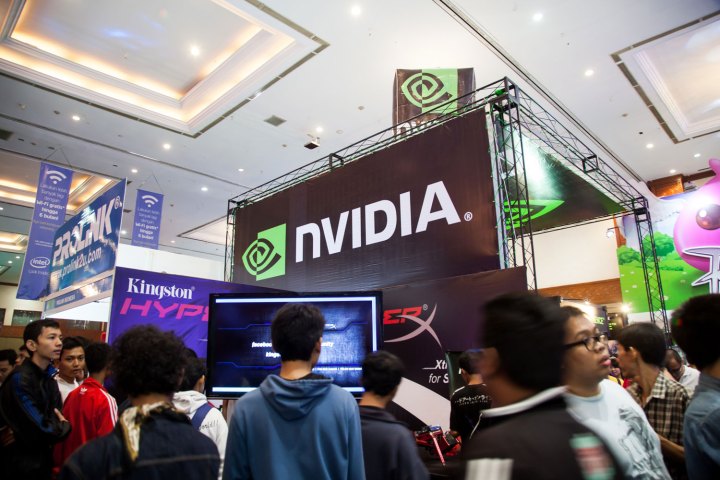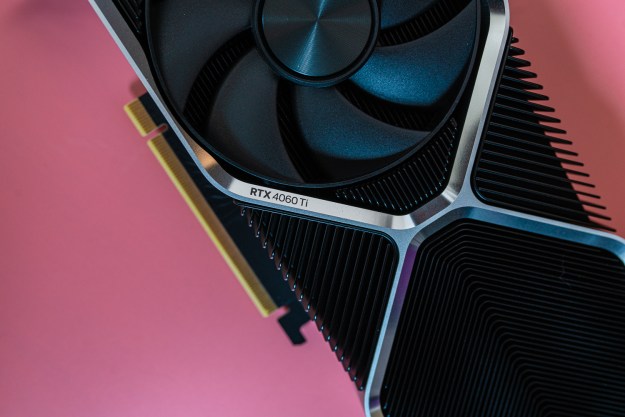
The hardware specs of Nvidia’s upcoming GTX 1070 card have reportedly been revealed, showing that it packs 1,920 CUDA cores, a boost clock of 1,600MHz, 8GB of GDDR5 video memory, a thermal envelope of 150 watts, an 8-pin power connector, three DisplayPort 1.4 connectors, an HDMI 2.0B port, and a Dual-DVI port. The 1070’s “Pascal” chip is the GP104-200 that is based on 16 nanometer FinFET process technology.
The specs also show that the upcoming card will have 15 streaming processors (out of 20), 120 texture mapping units, possibly 64 render output units like the GTX 1080, a memory clock of 2,000MHz, an effective memory clock of 8,000MHz, and what could be a 256-bit memory bus and a memory bandwidth of 256GB/s. The card will offer 6.75 TFLOP/s of single-precision floating point performance, and support 2-way SLI configurations with SLI-HB bridge support.
As a comparison, the meatier, more expensive GeForce GTX 1080, landing later this month, uses the GP104-400 chip packed with 2,560 CUDA cores, 20 streaming processors, 160 texture mapping units, and 64 render output units. While we still don’t know the base clock of the GTX 1070, the GTX 1080 has a base clock of 1,607MHz and a boost clock of 1,733MHz. This card offers 8.2 TFLOP/s of performance.
The new GTX 1080 also uses 8GB of the new GDDR5X memory clocked at 1,250MHz. Other features include an effective memory clock of 10,000MHz, a 256-bit memory bus, a memory bandwidth of 320 GB/s, an 8-pin power connector, and a thermal envelope of 180 watts. This card will cost $600 when it launches in a few weeks, whereas the GeForce GTX 1070 will cost $380 when it ships next month.
Nvidia also plans to launch a “Founders Edition” of the GeForce GTX 1070 for a higher cost of $450 this summer. It’s basically a reference card built and sold by Nvidia sporting an upgraded power supply, an upgraded power delivery network on the actual board, and extra capacitance added to the filtering network. The backplate will reportedly provide a removable section so that users experience better airflow between multiple cards mounted in SLI mode. The card will also sport an industrial design with a faceted body.
What you won’t see with either version of the Founders Edition cards from Nvidia are special performance features like overclocked GPUs. That will likely stem from Nvidia’s partners instead — such as Gigabyte, Asus, and Zotac — who will pack on overclock profiles and create their own custom designs at a number of different price points. Customers will reportedly be able to grab an untouched Nvidia Founders Edition card through Geforce.com in the near future.
Given that June 10 is just right around the corner, we expect Nvidia to unleash the official specs of its GeForce GTX 1070 card rather soon, including the mysterious base clock speed that wasn’t made available in the “leaked” specs. Maybe we’ll see more info during Computex 2016, slated at the end of the month.
Editors' Recommendations
- Nvidia RTX 50-series graphics cards: news, release date, price, and more
- Nvidia just fixed a major issue with its GPUs
- Nvidia’s peace offering isn’t working
- Nvidia’s RTX 4060 might not be such a disappointment after all
- Nvidia’s most important next-gen GPU is less than 2 weeks away



